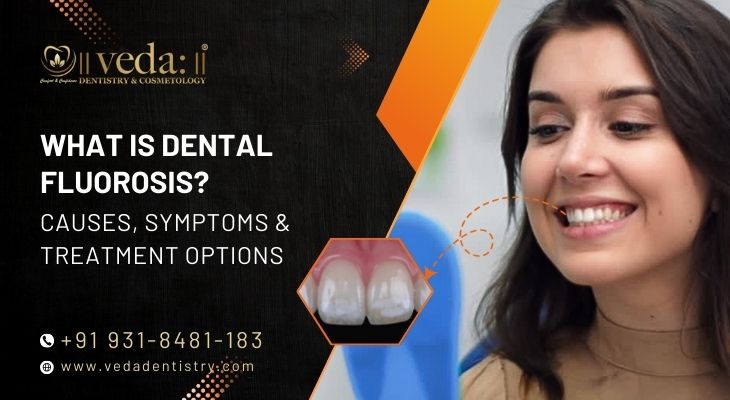
Ever noticed white spots or streaks on your teeth? That could be dental fluorosis—a condition caused by too much fluoride while teeth are still developing. While fluoride is great for preventing cavities, excessive amounts can leave visible marks on the enamel.
Fluorosis mainly affects how teeth look, with discoloration ranging from mild white streaks to more noticeable stains and rough enamel. The good news? It doesn’t impact how teeth function, but it can be a cosmetic concern for many people.
What Causes Dental Fluorosis?
Fluorosis happens when kids consume too much fluoride while their teeth are still forming under the gums. Fluoride is found in many everyday sources, and overexposure can lead to this condition. Here are some of the most common culprits:
What’s the All-on-6 Dental Implant?
-
Fluoridated Drinking Water – Some areas have naturally high fluoride levels in their water supply, increasing the risk of fluorosis, especially in young children.
-
Fluoride Toothpaste & Mouthwash – Kids who swallow toothpaste or mouthwash instead of spitting it out may take in too much fluoride.
-
Fluoride Supplements – These are meant to prevent cavities, but if a child already gets enough fluoride from water, taking supplements can lead to overexposure.
-
Fluoride in Food & Drinks – Many processed foods and beverages are made with fluoridated water, which can unknowingly add to fluoride intake.
Signs & Symptoms of Dental Fluorosis
The severity of fluorosis can vary from barely noticeable to more obvious discoloration. Dentists typically classify it into three levels:
-
Mild Fluorosis – The most common form, showing as faint white streaks or specks on teeth. Most people don’t even realize they have it unless pointed out by a dentist.
-
Moderate Fluorosis – White patches become more noticeable, covering larger areas of the enamel. Some brown discoloration may also appear.
-
Severe Fluorosis – This is rare but can cause dark brown stains, rough enamel, and even small pits on the tooth surface, making teeth look uneven.
How to Treat Dental Fluorosis
Fluorosis isn’t a health issue, but if the stains bother you, several cosmetic treatments can improve the appearance of your teeth:
-
Teeth Whitening – Professional whitening can help lighten stains, but it’s usually more effective for mild cases.
-
Microabrasion – This treatment removes a thin enamel layer to reduce stains, working well for mild to moderate fluorosis.
-
Dental Bonding – A tooth-colored resin is applied to cover stains and improve the overall look of teeth.
-
Veneers –Thin porcelain or composite shells placed over teeth to hide discoloration, perfect for moderate to severe cases.
-
Crowns – In extreme cases where enamel is significantly damaged, crowns restore both the look and function of affected teeth.
Final Thoughts
Dental fluorosis is a common cosmetic condition caused by excessive fluoride exposure during childhood. While it does not impact dental health, many individuals seek treatment to improve the appearance of their smiles. By being mindful of fluoride intake and visiting the dentist regularly, you can maintain healthy teeth while still enjoying the cavity-fighting benefits of fluoride.
At Veda Dentistry, we offer effective dental fluorosis treatment in Delhi to help you achieve a flawless smile.


Book An Appointment